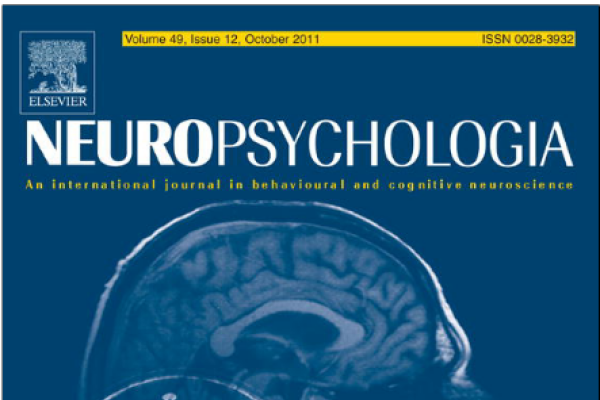2011-09-22

Fronto-striatal loops play an important role action selection processes, especially when discordant sensory and contextual information has to be integrated to allow adequate selection of actions. Yet, it is widely unknown how far changes in the precision of neural synchronization processes are induced by only slight dysfunctions of striatal neural inter-connectivity and in how far such slight changes may affect action selection processes. To elucidate the role of fronto-striatal interactions, these processes may be examined in neurodegenerative basal ganglia disorders. We investigated these processes in a neurogenetic, degenerative disorder (i.e. Huntington's disease) in a modified Go/Nogo task, while assessing neural synchronization processes by means of phase-locking factors (PLFs) as derived from event-related potentials (ERPs). The results show that gene mutation carriers, who have not yet developed clinical signs of this movement disorder (i.e., pre-HDs) only encounter problems in response inhibition, when discordant contextual information and sensory input have to be integrated. No deficits were evident, when response inhibition can be based on more habitual stimulus–response mappings, i.e., when contextual and sensory information were congruent. While 'habitual' action selection is unaffected by changes in striatal structures influencing reliability of neural synchronization processes, efficient 'controlled' processes of action seem to be closely dependent upon highly reliable neural synchronization processes. The neurophysiological analysis suggests that especially pre-motor inhibition processes (Nogo-N2) are affected. This was most strongly reflected in a decline in the degree of phase-locking in the Nogo-N2 range. Deficits in pre-HDs seem to emerge as a consequence of phase-locking-behavioural decoupling. Of clinical interest, declines in the precision of phase-locking depended on the amount of the individual's mutant huntingtin exposure and predicted the probability of disease manifestation in the next five years. This suggests that phase-locking parameters may prove useful in future studies evaluating a possible function as a biomarker in Huntington's disease.

Fronto-striatal loops play an important role action selection processes, especially when discordant sensory and contextual information has to be integrated to allow adequate selection of actions. Yet, it is widely unknown how far changes in the precision of neural synchronization processes are induced by only slight dysfunctions of striatal neural inter-connectivity and in how far such slight changes may affect action selection processes. To elucidate the role of fronto-striatal interactions, these processes may be examined in neurodegenerative basal ganglia disorders. We investigated these processes in a neurogenetic, degenerative disorder (i.e. Huntington's disease) in a modified Go/Nogo task, while assessing neural synchronization processes by means of phase-locking factors (PLFs) as derived from event-related potentials (ERPs). The results show that gene mutation carriers, who have not yet developed clinical signs of this movement disorder (i.e., pre-HDs) only encounter problems in response inhibition, when discordant contextual information and sensory input have to be integrated. No deficits were evident, when response inhibition can be based on more habitual stimulus–response mappings, i.e., when contextual and sensory information were congruent. While 'habitual' action selection is unaffected by changes in striatal structures influencing reliability of neural synchronization processes, efficient 'controlled' processes of action seem to be closely dependent upon highly reliable neural synchronization processes. The neurophysiological analysis suggests that especially pre-motor inhibition processes (Nogo-N2) are affected. This was most strongly reflected in a decline in the degree of phase-locking in the Nogo-N2 range. Deficits in pre-HDs seem to emerge as a consequence of phase-locking-behavioural decoupling. Of clinical interest, declines in the precision of phase-locking depended on the amount of the individual's mutant huntingtin exposure and predicted the probability of disease manifestation in the next five years. This suggests that phase-locking parameters may prove useful in future studies evaluating a possible function as a biomarker in Huntington's disease.